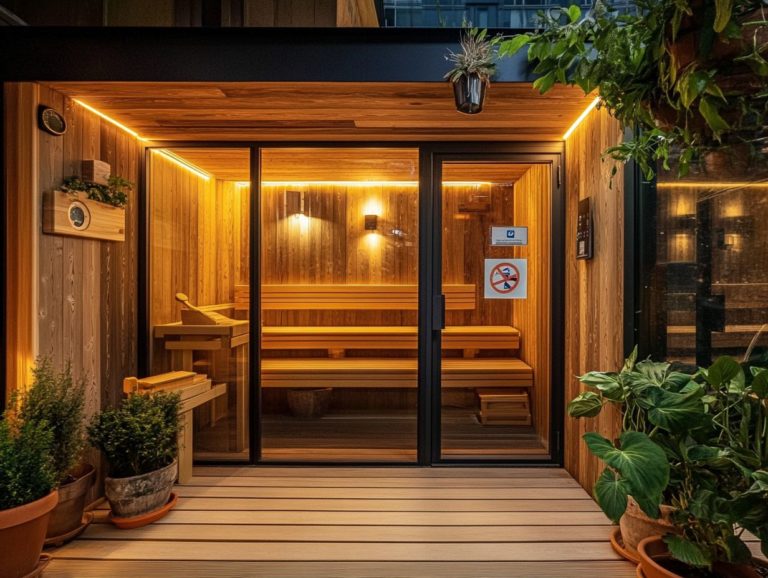Understanding Sauna Safety Regulations
Saunas offer a peaceful escape. However, understanding safety regulations is key to having a safe and enjoyable time.
With risks like dehydration and overheating lurking, being familiar with the guidelines can significantly reduce the chance of accidents. This guide explores critical aspects of sauna safety, highlighting common regulations such as temperature limits and proper ventilation. It also offers precautions for users.
Whether you’re a sauna aficionado or managing one, this information will equip you with the vital knowledge needed to enhance both safety and enjoyment in your sauna experience.
Contents
Key Takeaways:
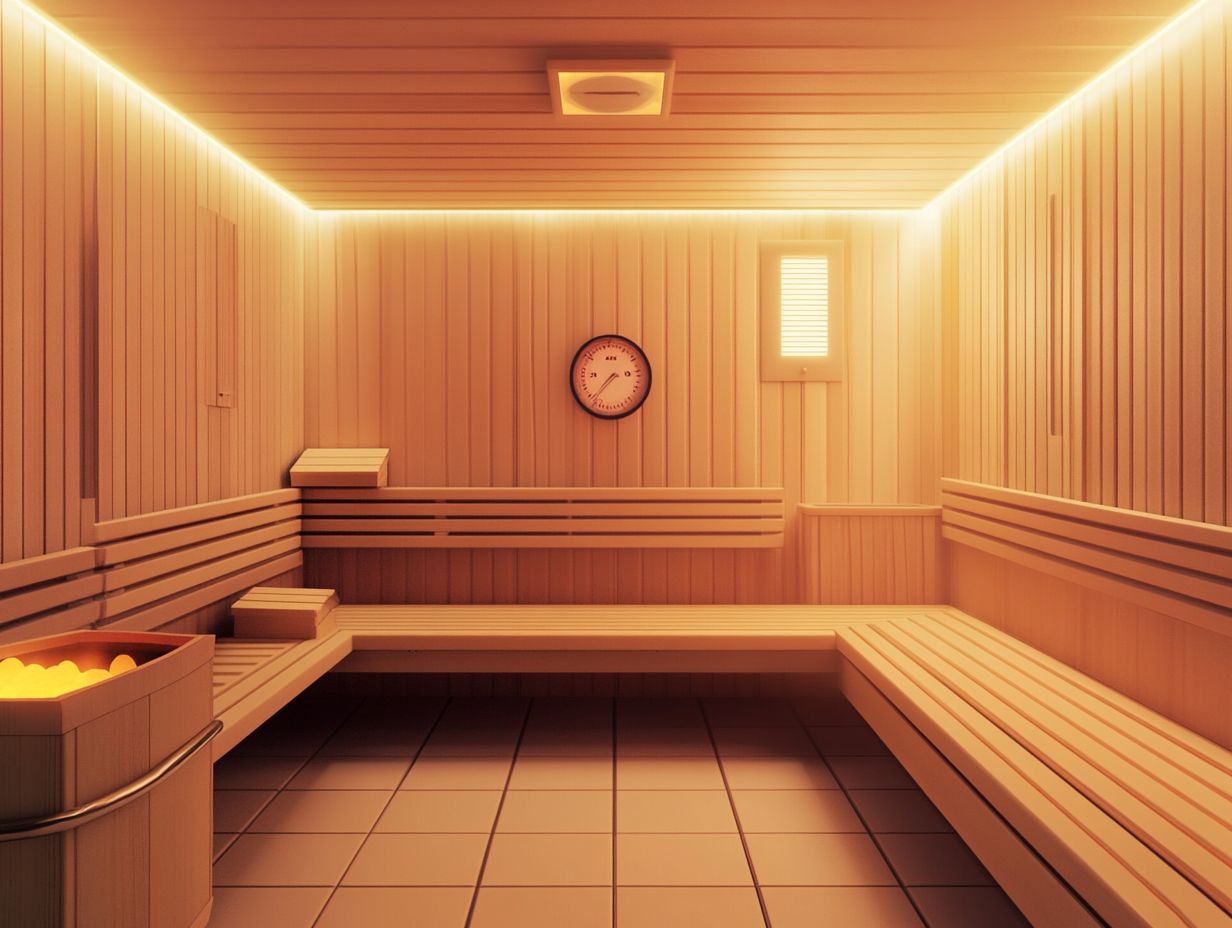
- Prioritize sauna safety to prevent risks and ensure your personal safety.
- Follow temperature limits and proper ventilation guidelines for an enjoyable sauna experience.
- Sauna owners and operators should follow specific steps for compliance, while users should take precautions and be aware of emergency protocols.
What are Sauna Safety Regulations?
Sauna safety regulations are crafted to guarantee a safe and enjoyable experience for every user, especially those with mobility challenges or health concerns. These regulations cover a variety of requirements, such as accessible saunas, temperature guidelines, and proper ventilation.
This approach fosters relaxation and enhances well-being for individuals enjoying different types of saunas, including Turkish, infrared, and Finnish varieties.
Adhering to these regulations is often guided by established standards like the Americans with Disabilities Act (ADA), underscoring the importance of creating an inclusive environment for all.
Importance of Sauna Safety
Understanding sauna safety can elevate your experience and maximize the health benefits! By adhering to health guidelines, you ensure a safe sauna session and enhance relaxation, promoting optimal physical well-being.
This awareness of sauna etiquette and safety protocols is crucial for all users, whether casual or dedicated.
Potential Risks of Unsafe Sauna Practices
Engaging in unsafe sauna practices can expose you to various health risks, especially if you have pre-existing conditions like heart disease or hypertension. It’s vital to understand these potential hazards to ensure that your sauna experience is both safe and responsible, in line with established safety regulations.
Neglecting hydration can lead to serious dehydration, while spending too long in high temperatures may result in overheating, manifesting as dizziness and nausea. It s crucial to listen to your body and recognize any signals of distress or discomfort.
If you have specific health concerns, consult your healthcare provider to establish your personal safety limits. Take regular breaks, refresh with cool water, and consider using timers to manage your sauna sessions effectively.
By prioritizing awareness and preparation, you can fully enjoy the therapeutic benefits of sauna use without jeopardizing your health, including skin health and overall well-being.
Common Sauna Safety Regulations
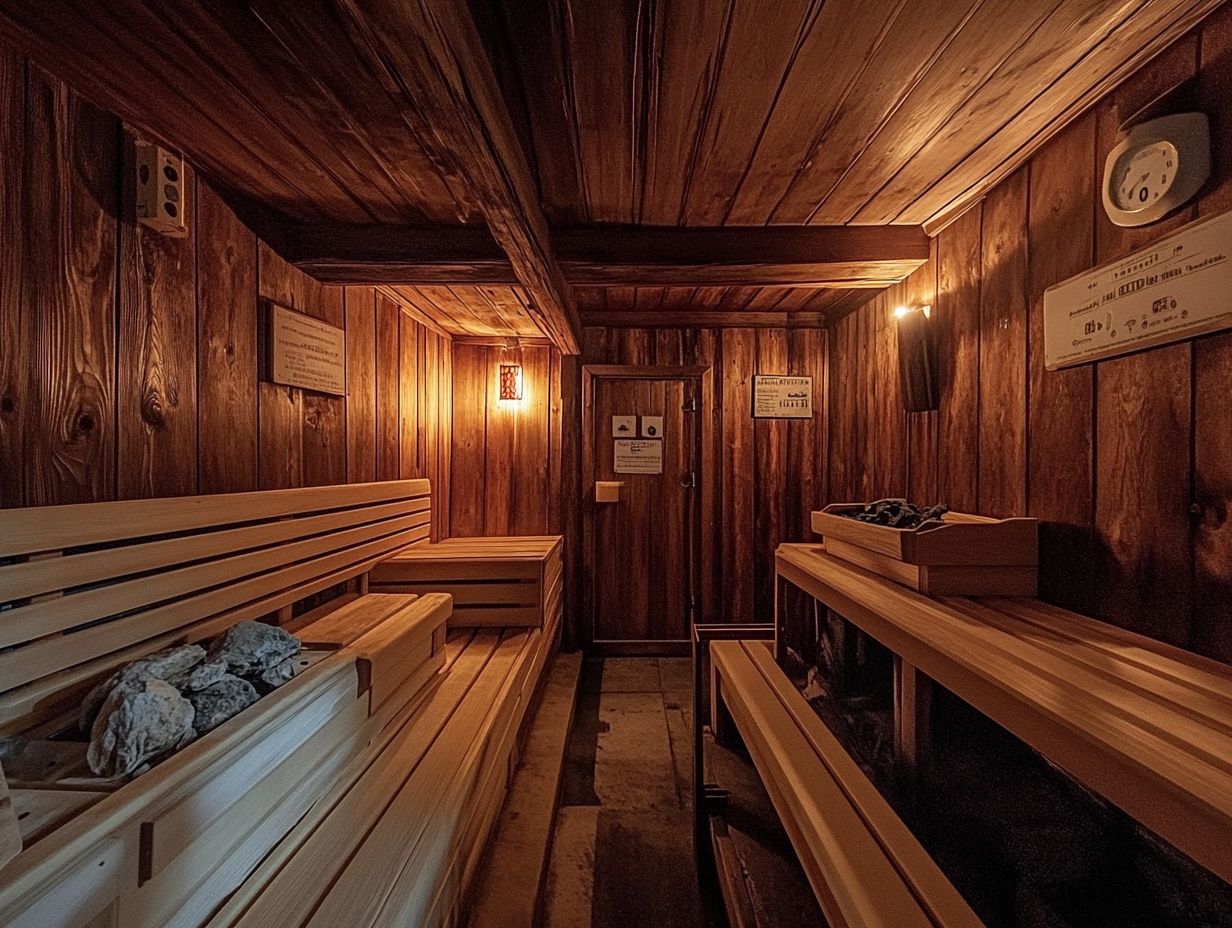
Understanding common sauna safety regulations is essential for ensuring a safe and enjoyable experience for everyone involved. These regulations focus on critical components, such as temperature guidelines to prevent overheating, comprehensive maintenance routines for hygiene, and compliance with ADA standards for accessibility.
By adhering to these principles, you help create an inclusive and welcoming environment in various sauna settings.
Temperature and Time Limits
Maintaining the right temperature and time limits is essential for sauna safety. This ensures that each session is enjoyable and risk-free. Most health guidelines suggest that sauna temperatures should not exceed specific thresholds. It’s important to limit your time inside to prevent overheating, which is critical for safe sauna operation.
For traditional saunas, the ideal range typically falls between 150 F and 195 F (65 C to 90 C). Infrared saunas operate at more moderate temperatures, usually between 120 F and 150 F (49 C to 65 C). It s generally recommended that you spend no longer than 15 to 20 minutes in the sauna at a time. Exceeding these limits can lead to dehydration, heat exhaustion, or other health issues.
To ensure a safe experience, make sure to stay hydrated, listen to your body s signals, and consider using a timer for tracking your sessions. Take regular breaks to allow your body to cool down before stepping back into the warmth.
Proper Ventilation and Maintenance
Proper ventilation and regular maintenance are crucial for sauna safety. They directly impact your comfort and health. Ensuring adequate airflow within the sauna helps regulate temperature and humidity levels.
Regular maintenance creates a hygienic environment and enhances your overall sauna experience, whether at a health club or in your home.
An effective ventilation system prevents overheating and eliminates potentially harmful fumes, keeping the air fresh. As a sauna owner, diligently implementing routine cleaning protocols is essential. This includes regularly wiping surfaces, checking for mold growth, and assessing the functionality of heating elements and ventilation fans.
Don t forget to inspect insulation and seals regularly to maintain optimal air quality. This creates a safe atmosphere for everyone. By prioritizing these practices, you cultivate a welcoming sauna environment that encourages relaxation and wellness.
Ensuring Personal Safety in the Sauna
Ensuring your personal safety in the sauna begins with understanding essential sauna etiquette and practices that enhance both safety and enjoyment.
Stay aware of your own health conditions and follow the recommended cooling-off guidelines between sessions. For a better understanding of sauna usage, consider reviewing sauna safety policies. This helps you embrace the numerous benefits of the sauna while minimizing potential risks.
Precautions for Sauna Users
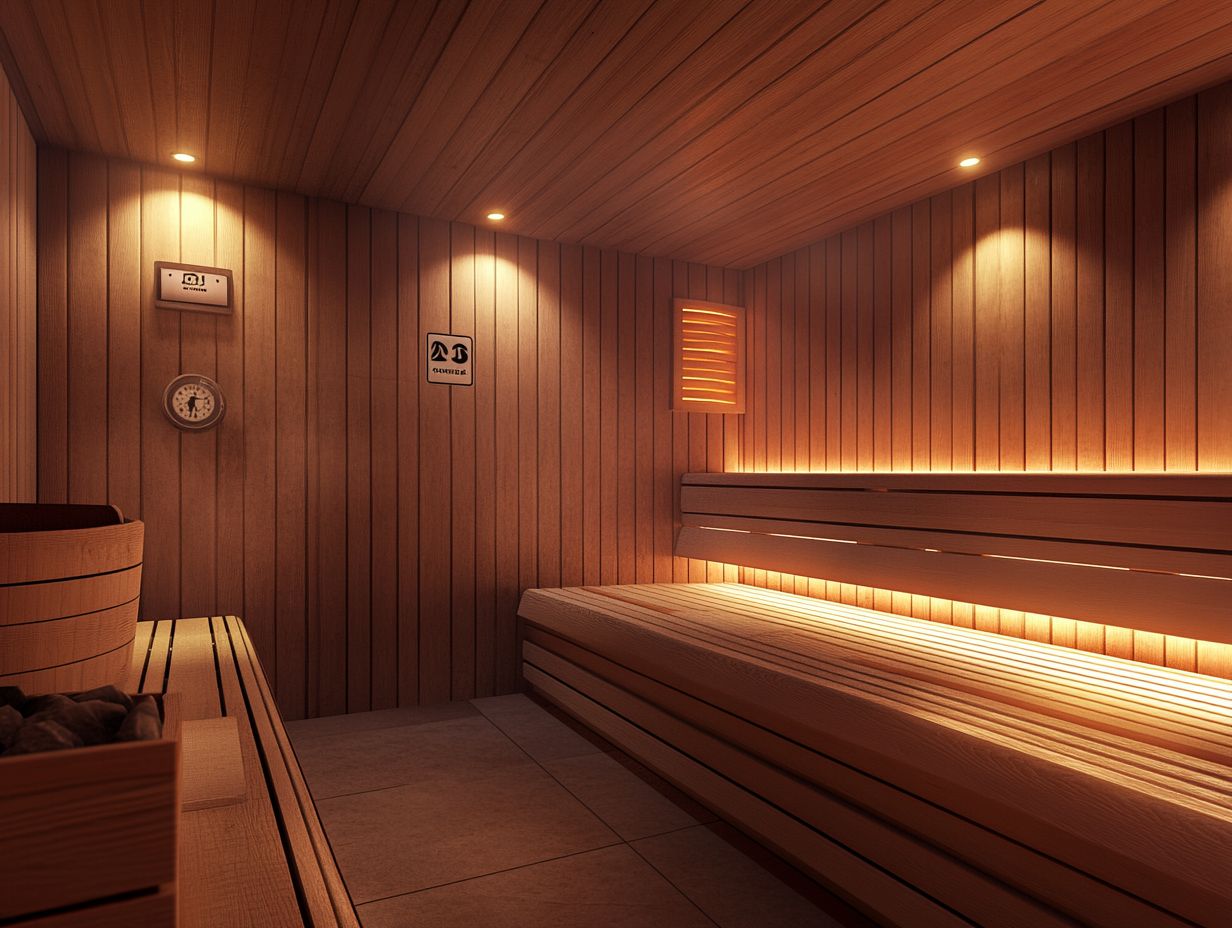
Taking specific precautions can greatly enhance your sauna safety, especially if you have underlying health conditions. Consider consulting a healthcare provider before using the sauna, staying well-hydrated, and keeping an eye on the time to avoid overheating.
If you have cardiovascular issues, keep an eye on your heart rate to stay safe and enjoy your sauna session! For those with respiratory conditions, opting for a lower-heat setting might be beneficial. Additionally, it’s important to be informed about sauna safety legislation; know your limits and if you experience dizziness, nausea, or excessive sweating, step out immediately!
In communal settings, communicate any discomfort to those around you and the sauna staff to foster a supportive atmosphere. Establishing a buddy system can also add safety, allowing someone to check in if you start to feel unwell.
Stay safe and enjoy all the benefits of your sauna by following these tips!
Emergency Protocols
Establishing clear emergency protocols is vital for ensuring the safety of sauna users, particularly in health clubs with multiple individuals present. These protocols must outline precise guidelines for responding to health emergencies, such as heat exhaustion or dehydration, while the sauna operates.
It s essential to include specific first aid measures, such as recognizing symptoms early and being prepared to administer immediate care. Sauna operators should be well-trained in effective communication strategies to quickly alert medical personnel and provide critical information about any situation that arises.
Regular drills prepare your staff to handle emergencies with confidence and efficiency. Maintaining a safe environment means operators must monitor the sauna’s temperature and humidity levels and ensure that safety equipment like water, ice packs, and first aid kits is readily accessible.
By upholding these standards, your efforts make a real difference in keeping everyone safe and promote a culture of safety in the sauna.
Complying with Sauna Safety Regulations
Complying with sauna safety regulations is more than just following the law; it reflects a genuine commitment to your well-being and comfort. By adhering to ADA standards guidelines for accessibility and implementing rigorous sauna operation and maintenance protocols, you can significantly enhance your experience, ensuring both accessibility and safety are paramount.
Steps for Sauna Owners and Operators
As a sauna owner or operator, you have a vital responsibility to ensure compliance with safety regulations. This goes beyond merely adhering to ADA standards; it also requires effective maintenance practices that promote a safer and more enjoyable experience for all users.
To accomplish this, conduct regular safety audits that assess both the functionality of your equipment and adherence to health guidelines. Training your staff on emergency protocols is equally important, as it prepares them to handle unexpected situations, providing peace of mind for your users.
Creating an inclusive environment for individuals with mobility devices is essential. You can achieve this by incorporating features such as:
- Ramps
- Wider doorways
- Designated space for equipment
By doing so, you allow everyone to experience the benefits of sauna therapy without barriers.
Frequently Asked Questions
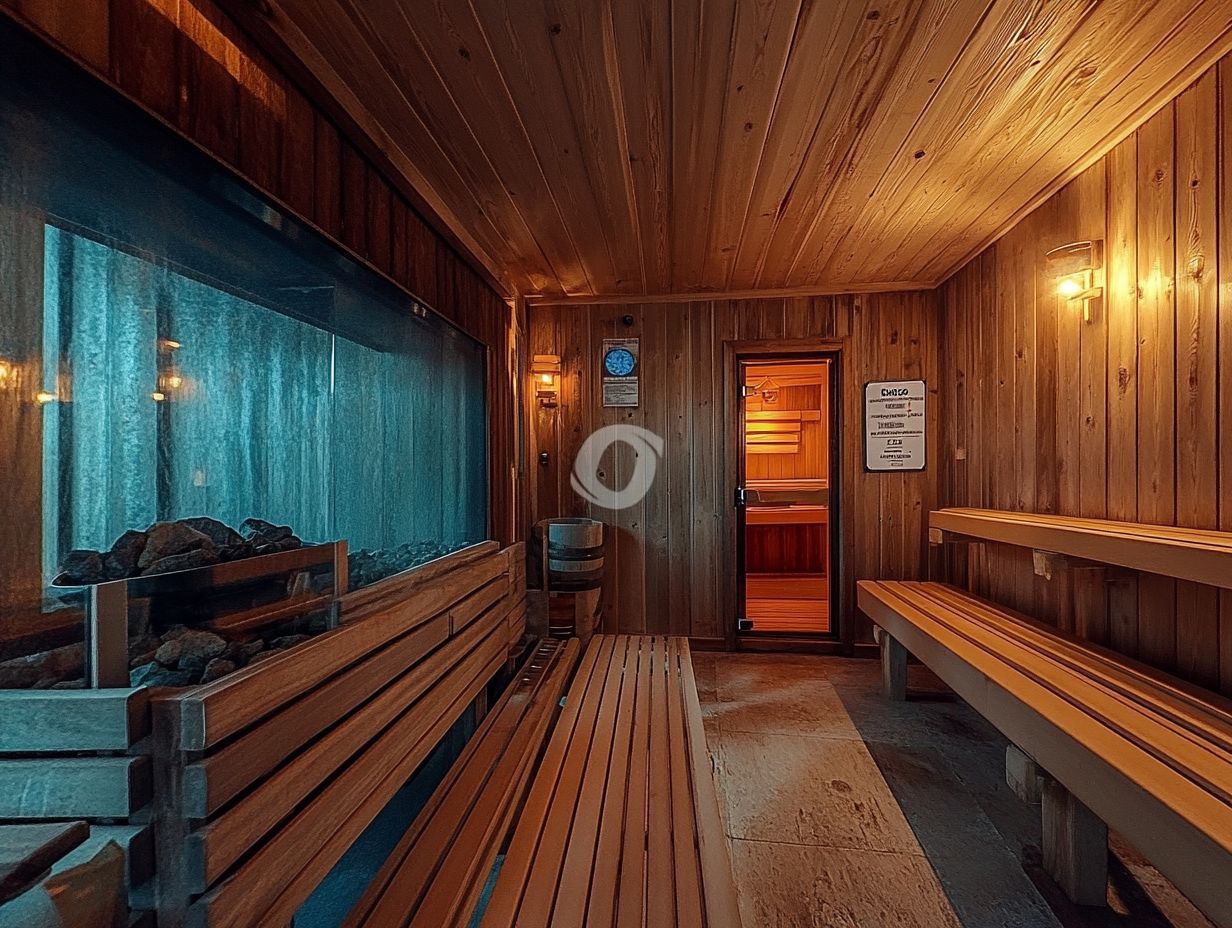
What are sauna safety regulations?
Sauna safety regulations are guidelines and rules put in place to ensure the safe use of saunas. These regulations cover everything from proper installation and maintenance to user behavior and safety precautions.
Why are sauna safety regulations important?
Sauna safety regulations are critical as they help prevent accidents and injuries, ensuring a safe and enjoyable experience for sauna users. They also maintain the longevity of saunas and prevent potential damage.
Who creates sauna safety regulations?
Sauna safety regulations are typically created by government or industry organizations, such as health and safety agencies or sauna manufacturers. These regulations are based on extensive research and are continuously updated to ensure the highest level of safety.
What are some common sauna safety regulations?
Common sauna safety regulations include maintaining proper ventilation, using sauna equipment made from non-combustible materials, and monitoring temperature and humidity levels in saunas.
Are there any risks associated with not following sauna safety regulations?
Yes, not following sauna safety regulations can lead to serious risks, such as burns, heatstroke, dehydration, and even carbon monoxide poisoning. It is essential to always follow these regulations to ensure a safe sauna experience.
How can I ensure sauna safety?
To ensure sauna safety, regularly check and maintain the sauna’s equipment and ventilation system. Always follow recommended temperature and time guidelines, and never use flammable materials inside the sauna. Stay hydrated and listen to your body’s signals if you feel uncomfortable or overheated.
Follow these guidelines to ensure your sauna experience is safe and enjoyable!



